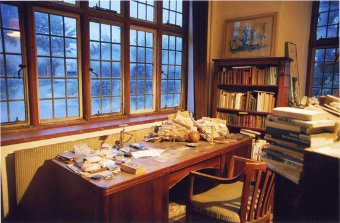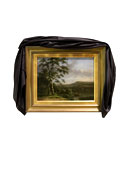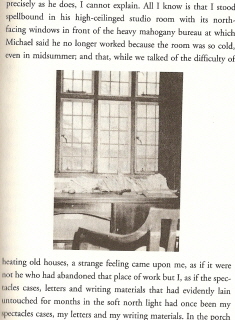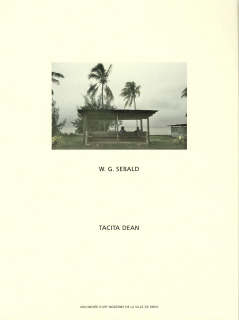Skimming Waterlog 3 – The Artists
…the museum and the gallery are those spaces where obscurity may become the condition for enlightenment. [Brian Dillon, writing in Waterlog]
I have never been much good at skipping stones across a pond. Nevertheless that is the image I had in mind when I thought of writing about the monograph Waterlog: Journeys Around an Exhibition over the course of three posts – here, here, and now here.This final post deals with the visual artists in the monograph, although several, due to the hybrid nature of their works, have already been mentioned in the post on the poetry of Waterlog. (There are also additional illustrations in that same post.) Keep in mind that I am not reporting on the exhibition itself (which I have not seen), only its manifestation in the form of this monograph.
In the books of W.G. Sebald, the twin powers of nature and history overwhelm whatever pretensions and inadequate defenses mankind can muster, inevitably bringing insignificance, loss, and death.The only lasting power that mankind itself wields is destruction – a destructive attempt to dominate nature and a endless knack for self-destruction in the form of war. For the most part, the artists in Waterlog choose to meditate on our dialectical relationship with nature rather than with history. Marcus Coates is the only artist to address, even if obliquely, mankind as an agent of destruction. As I have mentioned earlier, his project Britain’s Bitterns circa 1997 Population – 11 Breeding Males is an elegy to England’s bittern population – and by extension the animal kingdom – brought to the level of near extinction by human encroachment.
In a gesture that is both playful and quixotic, Alec Finlay throws poetic life buoys to the city of Dunwich, an important port during the middle ages that became completely lost to storms and erosion over the course of centuries and now lies underwater. His project The Sunken Bell also included a number of color photographs by Guy Moreton of ruins, flooded marshes and other reminders of the power of nature. Simon Pope’s project The Memorial Walks, which was part installation and part performance, involved the selection of landscape paintings from area museums which were displayed draped in black and only occasionally unveiled.
Unfortunately, there isn’t much that any publication can do to adequately translate video art onto the printed page. The film stills and short descriptions included in Waterlog give only the most skeletal sense of intriguing works by collaborators Alexander and Susan Maris and by Tacita Dean. In Alexander and Susan Maris’ video piece Silentium, Arvo Part’s composition Tabula Rasa provides the background music for their exploration of two key places in the life of composer Benjamin Britten: his long-time residence at Aldeburgh and the later residence in Horham, which he took up in order to find respite from the noise of air force planes flying overhead.
Tacita Dean is represented in Waterlog by two works, only one which was included in the exhibition. For Waterlog, Dean created a video on Sebald’s close friend the writer and translator Michael Hamburger, who died earlier this year.
Unwilling, perhaps unable, to talk of his past and his migrations, most especially fleeing Nazism in 1933, [Hamburger] talks poignantly, instead, of the apple trees in his garden…
Sebald had written his own lengthy profile of Hamburger on pages 175-190 of The Rings of Saturn, including two grainy photographs of the interior of Hamburger’s house. Stills from Dean’s video show scenes which clearly reference Sebald’s photographs.

Tacita Dean, still from Michael Hamburger
From The Rings of Saturn
Dean’s second work in Waterlog is a welcome reprint of a photo and text piece on Sebald which I have written about earlier. As far as I know, until now this work could only be found in a slim volume entitled W.G. Sebald as part of a boxed set of seven softcover catalogs produced in 2003 for an exhibition of Dean’s work at the Museé d’Art Moderne de la Ville de Paris. The version in Waterlog is not only a complete reprint of Dean’s fascinating piece on Sebald, but it also contains a brief Postscript that she added after the French publication.
Consisting largely of newly commissioned works from artists, the exhibition Waterlog is a clear indication of how Sebald’s writing can be inspirational material for artists in many media. As the exhibition’s successor in print form, Waterlog: Journeys Around an Exhibition does a fine job converting the exhibition into a book that is can stand on its own. I only wish that Waterlog included a full exhibition checklist, which would have documented the contents of the show.
 Simon Pope, from The Memorial Walks
Simon Pope, from The Memorial Walks




What an excellent blog you have here. Lots of fascinating details that show how Sebald was kind of . . . inevitable– genuis notwithstanding.